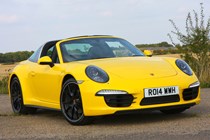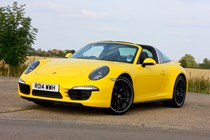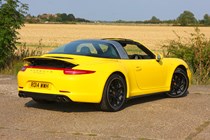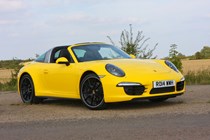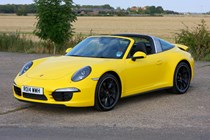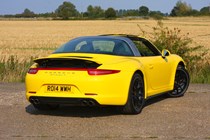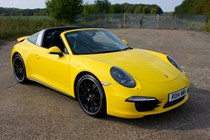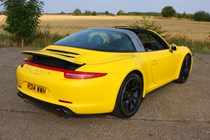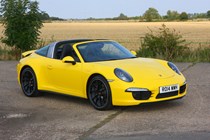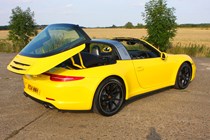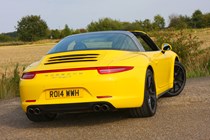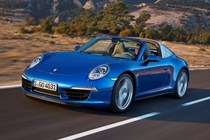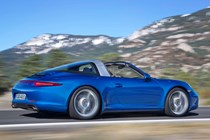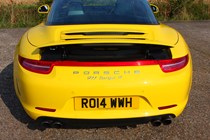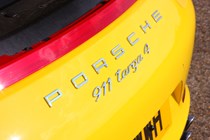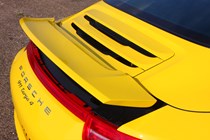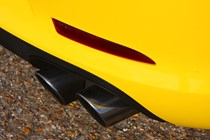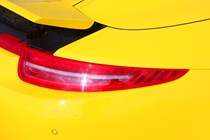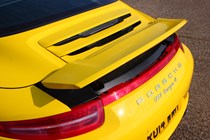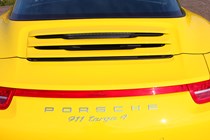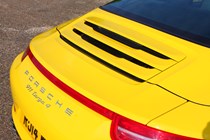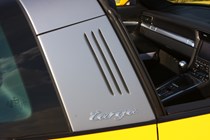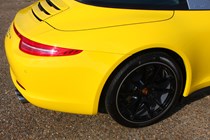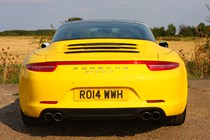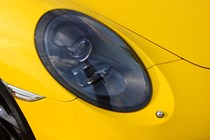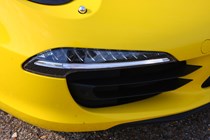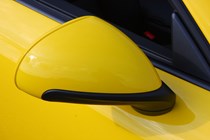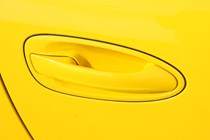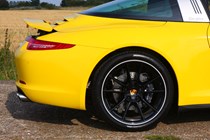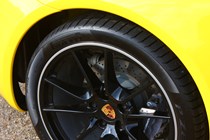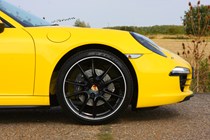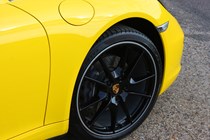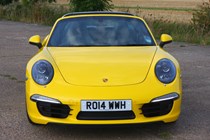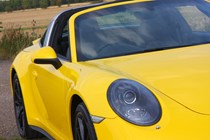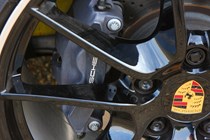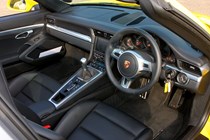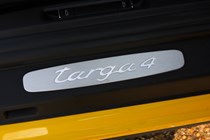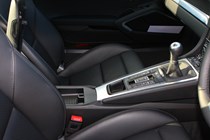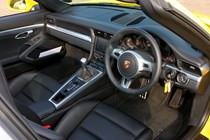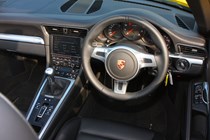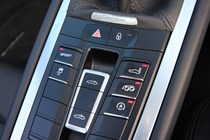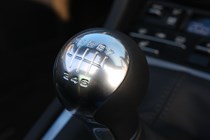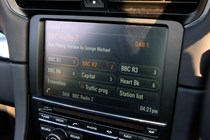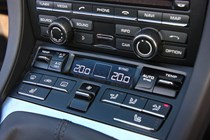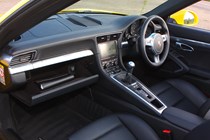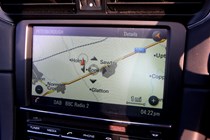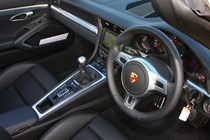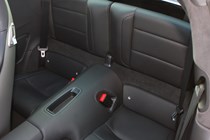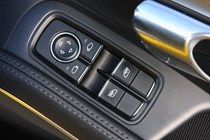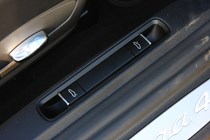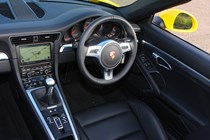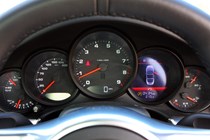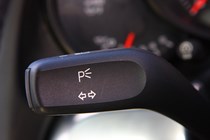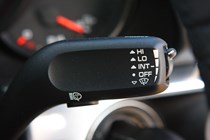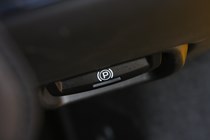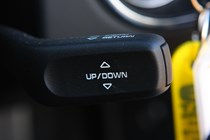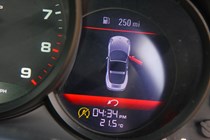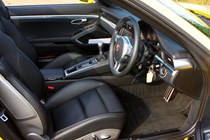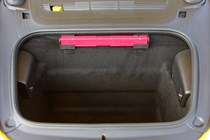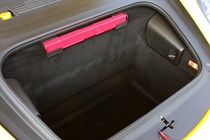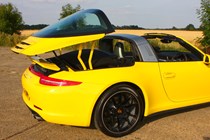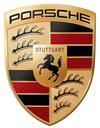
Porsche 911 Targa (2014-2019) engines, drive and performance
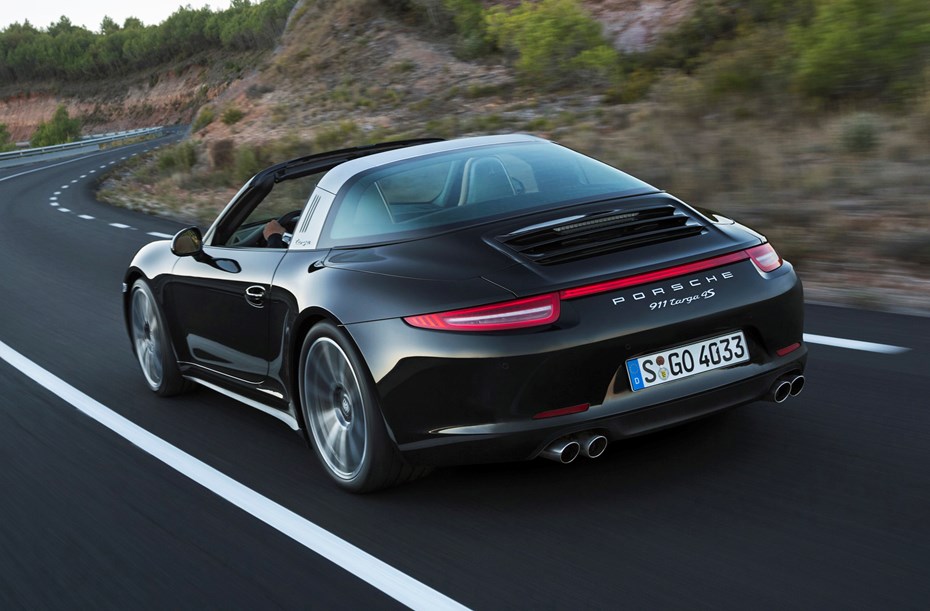
Porsche 911 Targa performance is one of the main reasons people buy this high performance sports convertible.
The Targa is available in two grades of potency: the 4 and the 4S. Both have four-wheel drive and are powered by the same 3.4-litre flat-six ‘Boxer’ engine, though the S gets a power upgrade to make it slightly quicker to get to 62mph from rest and can hit a higher top speed. Both versions can be specified with either a seven-speed manual or a seven-speed automatic (Porsche calls it PDK).
There is little to choose from them however, as both are mightily impressive and are very easy to drive. In terms of figures the Targa 4, PDK version in brackets, it delivers 345bhp, takes 5.2 seconds (5.0) to get from 0-62mph and can hit 173mph (175mph).
The more powerful Targa 4S packs 394bhp, hits 62mph from rest in 4.8 seconds (4.6) and can hit 182mph (183mph).
This is no scary, going-to-bite-your-head-off supercar though. At low revs the Porsche is tractable, easy to drive and stress free.
Floor the accelerator though and from 3000rpm the 911 Targa wakes up and starts to bellow hard, pouring the power out through the wheels in a desperate attempt to smash you and it hard into the horizon. It’s gob smacking stuff and a huge amount of fun. It never feels unwieldy, scary or intimidating – it’s just an awesome demonstration of what the 911 Targa is capable of.
The seven-speed manual gearbox may seem a bit frivolous but it works well with the spread of power from the engine. The seventh gear cannot be engaged unless the Targa is already in fifth or sixth – short shifting from third or fourth is not an option.
In sport mode the car automatically blips the throttle to match revs to the new lower gear being selected.
In rolling traffic jams, working up and down through seven gears can soon feel tiresome but given a straight open road nothing beats quick shifts through all seven gears as the engine yells behind you. This is one car that delivers a driving experience and even more so with the roof down as the engine sound swirls around you.
The Porsche 911 has been so well honed over the years that the levels of handling are supremely well suited to the road. It takes a test on a race track to really show up any short comings or where the limit of the car is.
On the road the suspension is supple and compliant following the undulations in the road but keeping the bumps from being transmitted through to the passengers.
The change to an electrically powered steering set-up rather than a hydraulic one has killed some of the feel of what the front wheels are up to.
The four-wheel drive system only works when the levels of grip decrease otherwise the power goes to the back wheels. That enables the front wheels to get on with steering.
The Porsche 911 Targa handling is also enhanced through several electronic systems including Torque Vectoring, which helps tighten a line through a corner by applying the brakes to the relevant wheel.
The four-wheel drive system also aids the way the 911 Targa grips the road as it continually assess traction and ensures the right levels of power go to all four wheels.


